HOLIDAY SALE! UP TO 70% OFF EVERYTHING Discover the deals
Models
Complete model list
A journey inside our fantastic products. Discover all the technical features! Just a simple click!
-
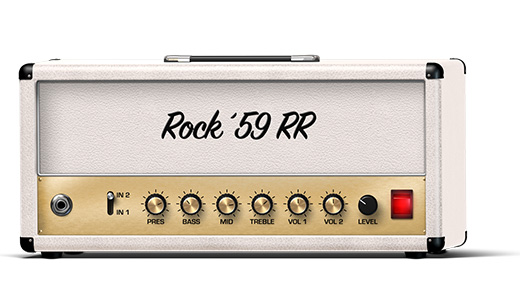 Rock '59 RR
Rock '59 RRInspired by a Marshall 1959RR*, this model is based on a Super Lead head with the Randy Rhoads mod. In this mod the two input stages are cascaded for additional gain. You can select the Input 1 for a more traditional SLP tone, or Input 2 for the modded channel. In this second case, the VOL 1 knob acts as the standard Master Volume and the VOL 2 knob controls the additional gain.
Tube models can be changed into TH-U, to extend its tone palette. -
 M. Plexi Voice 2
M. Plexi Voice 2It is the emulation of the lead channel of the legendary British Plexiglass-panel amplifier, manufactured from 1965 to 1981 when it was replaced by the 800. It is a 100W amp equipped with EL34 power tubes. The lead channel has a boosted bright tone. Besides Pete Townshend of The Who, early users include Eric Clapton and Jimi Hendrix, who used this amplifier with four 4×12" cabinets at the 1969 Woodstock Festival.
-
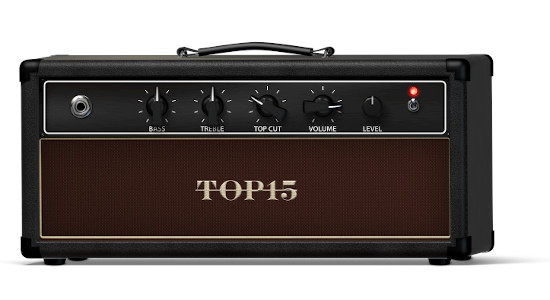 Top15
Top15Inspired by the 1958 Vox AC15*, is the Vox amp that "started it all”. Compared to the AC30, it breaks up at lower levels and offers a slightly brighter tone.
Tube models can be changed into TH-U, to extend its tone palette.
It includes the model of its 1x12” cabinet based on a single 12" Celestion/Vox alnico speaker. -
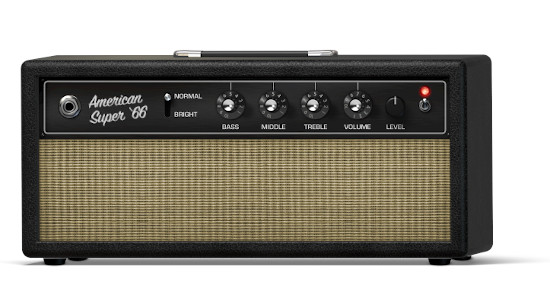 American Super ’66
American Super ’66Inspired by the 1966 Fender Super Reverb*, this amp is loud, proud, and punchy. This blackface 40w amplifier includes the Bright switch whose response changes according to the Volume settings in order to provide a solid and well balanced clean-to-crunchy tone. This amp is a standard piece a lot of studios and collections!
Tube models can be changed into TH-U, to extend its tone palette.
It includes the model of its 4x10” speaker cabinet. -
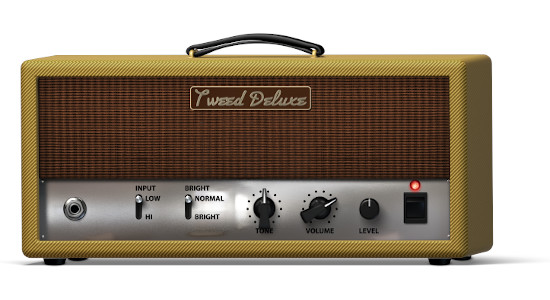 Tweed Deluxe amp
Tweed Deluxe ampThe Fender Deluxe amp of the 1950s was a medium-powered unit designed to let guitarists "hold their own" in a small group. The Tweed Deluxe is not known for producing a clean tone at high volumes, and as such, was regarded as being an intermediate amplifier. Ironically, the saturated tone this amplifier produces at higher volumes is the reason why it is one of the more famous amplifiers Fender ever produced.
-
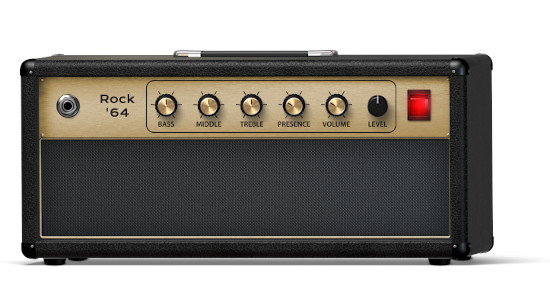 Rock ’64 amp
Rock ’64 ampRock '64 (UK)This 45 watt all tube amplifier is often referred to as British’s version of the American Bassface ’59. The amp uses KT66 vacuum tubes in the output stage, and 12AX7 tubes in the pre-amplification stage which gives it a very natural and unique gain. It has been favored by many Blues and Rock players. The amp works beautifully for crunchy rhythm, especially combined with an overdrive or distortion pedal in the front.
-
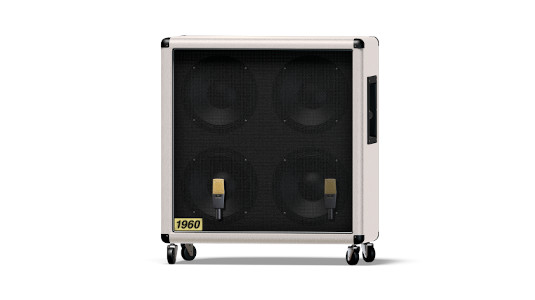 4x12 1960 White (UK)
4x12 1960 White (UK)This cab is modeled on the white 4x12” 1960 cabinet, equipped with 4 G12T-75 speakers.
-
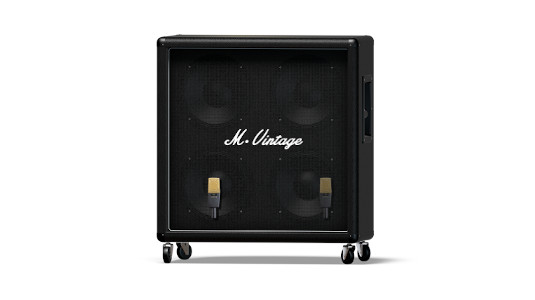 M. Vintage cabinet
M. Vintage cabinetThis 4 x 12” guitar cab is modeled after a classic British cab released in the early 60s. If you’ve ever been to a rock concert, it is more than likely that you saw those cabs on stage. This module will give your tone huge depth and tons of character. It is comfortable in most musical situations, but will really shine with the drive knob of your amp cranked up. Wether you play Blues, Rock, or Heavy Metal – this guitar will deliver the goods.All samples recorded using a Rock 900(UK) amplifier
-
 1x12 OB Top15 (UK)
1x12 OB Top15 (UK)This is the model of the 1x12" cabinet, part of the Top15 combo. It is based on a single 12" Celestion/Vox alnico speaker and delivers a bright vintage tone, with lot of presence in the mid range.
-
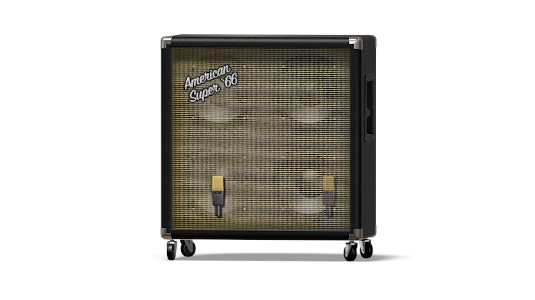 4x10 Super (US)
4x10 Super (US)This is the model of the 4x10" cabinet, part of the American Super '66 combo. Its vintage tone, bounce and feel of rear-loaded 10” speakers is instantly recognizable and addictive for those seeking legitimate traditional tones.
-
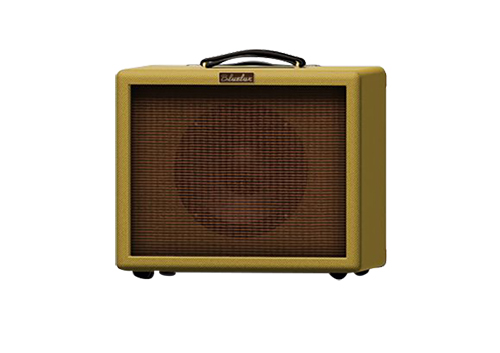 1X12” BLUELUX (US)
1X12” BLUELUX (US)It is the 1x12” speaker of an American blues combo. It is equipped with one 12-inch Alnico speaker and it excels in the midrange where it delivers a tone with lot of presence.
-
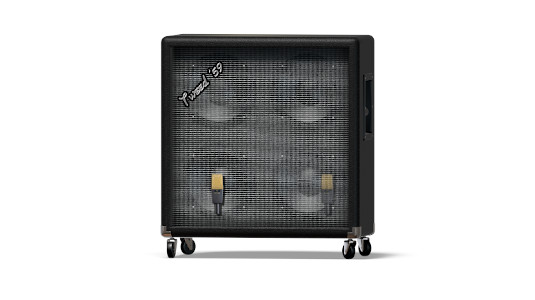 Tweed Deluxe cab
Tweed Deluxe cabThis 4 x 10” guitar cab is modeled after a classic American guitar cabinet released in the late-50s. This module delivers rich clear tones that will easily fill up a large concert venue. The 4x10" OB Tweed '59 (US) is the perfect choice when using cleaner to slightly overdriven tones. It is a medium output guitar cabinet that will accurately carry out all the nuances of your playing. The cabinet is quite bass heavy which helps your tones fill out a room nicely.All samples recorded using a Bassface ’59 (US) amplifier.
-
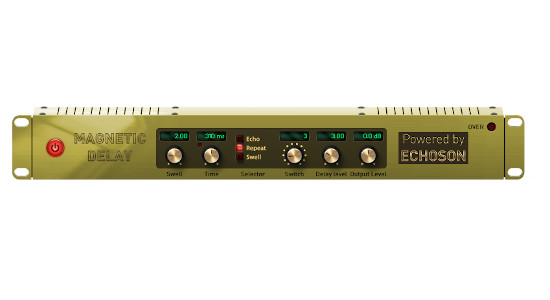 Magnetic Delay
Magnetic DelayThe Magnetic Delay component seeks to recreate the tone of a Binson Echorec 2, the legendary drum delay unit used by David Gilmour and by the Shadows to create sounds that were quite innovative at the time. Only magnetic (tape and drum) delays were available in the 60s, as the bucket brigade circuits didn’t allow to have long delay times, so this is a crucial effect to recreate the typical mood of that decade.
-
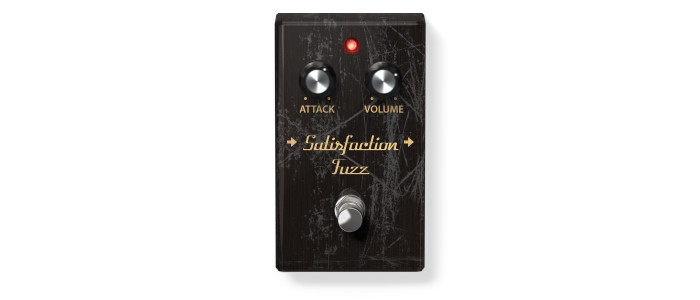 Satisfaction Fuzz
Satisfaction FuzzInspired by the Maestro FZ-1 Fuzz, it was the first widely marketed guitar fuzz effect. Introduced in 1962, it became popular in 1965 after Keith Richards prominently used the it on "Satisfaction”.
Based on three germanium transistors, it has a very brilliant tone. The Attack knob controls the amount of fuzz and the Volume knob can be used to set how hard it drives the amplifier. -
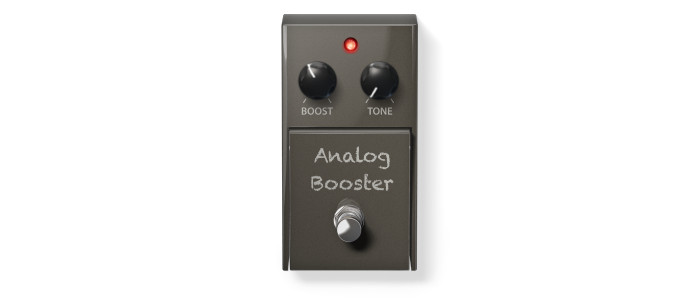 Analog Boost
Analog BoostThis special treble booster allows to control separately the total amount of boost and the amount of treble boost.
The Boost knob sets the total amount of gain. The Tone knob sets the amount of gain of the high frequencies. This pedal is particularly useful to push into saturation the amp of the 60’s which, without a treble booster, may sound too muddy on the low end. -
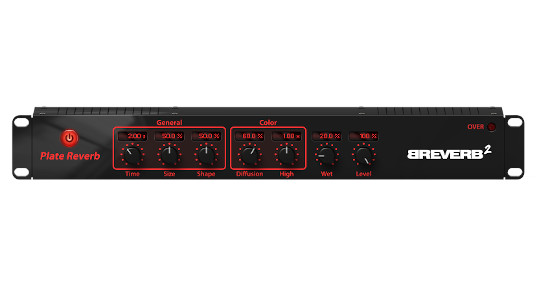 Plate Reverb
Plate ReverbThe Plate Reverb is powered by Overloud’s BREVERB. This effect reproduces the reverberation you would get by hitting a small steel plate under tension. This type of reverb was one of the first methods of reverberation used in the early days of studio recording. This affects produces a short delay that works particularly well at lower settings. Increasing the makes of the reverb can produce unnatural tones. The Plates Reverb works well for cleaner tones and will find its place in your guitar rig if you are into Blues or Jazz music.
-
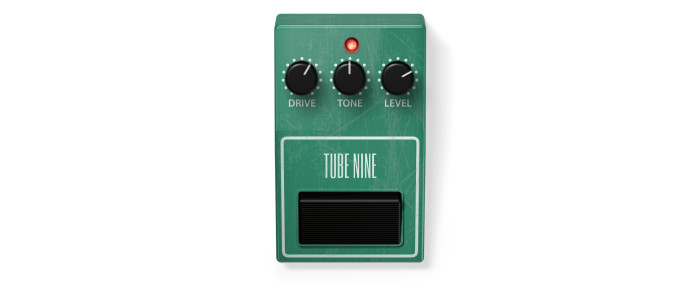 Tube Nine
Tube NineThe TubeNine is modeled after the famous Japanese tube enhancer guitar effect pedal. This pedal simulates the tone you would get with a warmed up tube guitar amplifier. This pedal is great to add even more realism and feel to any of Overloud’s already super realistic models. In addition to the tone control knob, the TubeNine offers a built in “mid-hump” which enhances the mid frequencies. This makes it a very useful pedal as it will help your guitar sections cut through the mix.
-
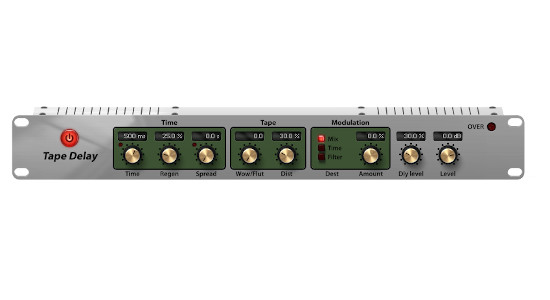 Tape Delay
Tape DelayThe Tape Delay is a classic delay designed by Overloud. In the early infancy of delay effects, the repetitions would be produced by recording and playing back an idea on a tape. This would produce a slightly altered sound to the repetitions as tape recording is not as accurate as what we would hear with digital recording. The Tape Delay reproduces the sound played back through a tape. This type of delay is often considered warmer and more natural that what you would hear with a digital delay.
-
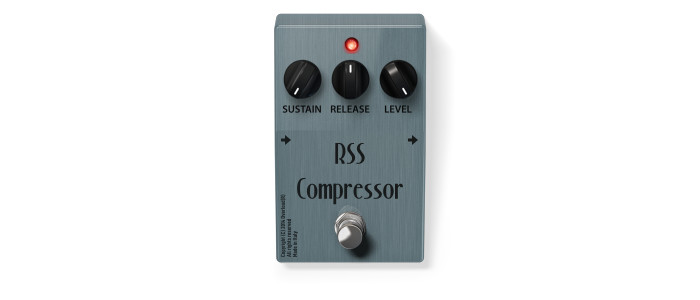 rss Compressor
rss CompressorThe RSS Comp is modeled after a classic vintage guitar compressor very sought after by collectors and tone chasers. The compressor adds warmth and sustain to your guitar tone. Increasing the sustain knob will add a slight saturation to your clean sounds giving players the feel of a warm tube amp. Adding the RSS Compressor to your guitar effect rig can really make the difference and add a musical analog feel to your overall tone. When used in a lead guitar situation, the RSS Comp helps your longer notes sustain and feedback as they would when playing through a cranked up amplifier.
-
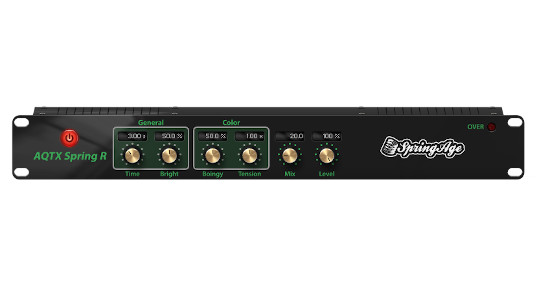 AQTX Spring Rev
AQTX Spring RevThe AQTX Spring Reverb is modeled after one of the most famous spring reverbs in the world. Adding this effect to any guitar track will add a genuine reverberated sound to it as heard in many the vintage guitar amplifiers. The effect offers a Spring section which allows you to set the length and tension of the modeled spring which in turn affects the type of reverb you here. Because of its analog character, the AQTX Spring Reverb Works particularly well when the combined with classic warm tube amps. Adding this module to your guitar effect rig when playing Blues or Jazz will do wonders to your tone.
-
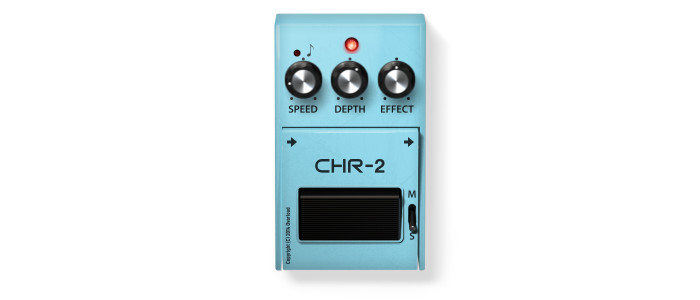 CHR-2
CHR-2The CHR-2 chorus is modeled after a very popular Japanese stomp box effect pedal released in the early 80s. This pedal will give you a classic sounding chorus as heard on many classic rock records. The CHR-2 works great with arpeggiated chords. It does a great job at preserving your guitar’s original tonal character. This discreet sounding chorus is perfect for clean tones. It will enhance your sound without over-coloring your original tone. It is the perfect addition to any guitar effect rig!
-
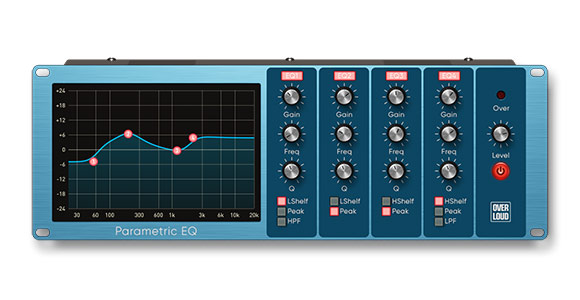 Parametric EQ
Parametric EQThe Parametric EQ is an Overloud custom equalizer that allows you to shape your tone further than what most guitar amplifiers allow you to. Two separate frequencies can be adjusted. This module is particularly useful when trying to make a lead guitar stand out in a mix. Increasing the mids will give you more definition and help you cut through the other tracks. Scooping the mids will give you a super heavy tone when used in conjunction of a heavily distorted amp.
-
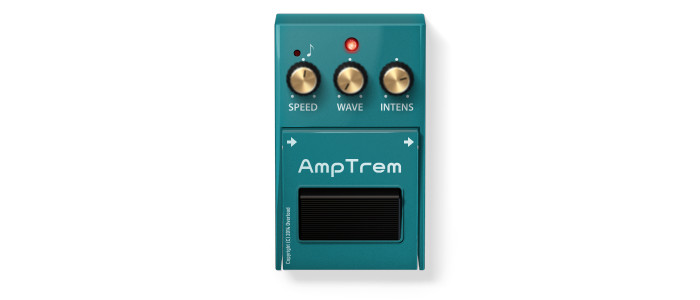 Amp Trem
Amp TremThe AmpTrem is modeled after the classic tremolo effect as heard in classic clean American and British amplifiers. This effect works particularly well with clean guitar sections. It will add a very musical modulation to your sound. Different tremolo modes are available for you to choose from. Each modes will give you different modulation curves from discrete mellow tremolo for clean jazz voicings to more pronounced tremolo effects ideal for single note guitar lines. Combined with the delay pedal, the AmpTrem will produce a wonderful musical tone ideal for complex chord voicings.
